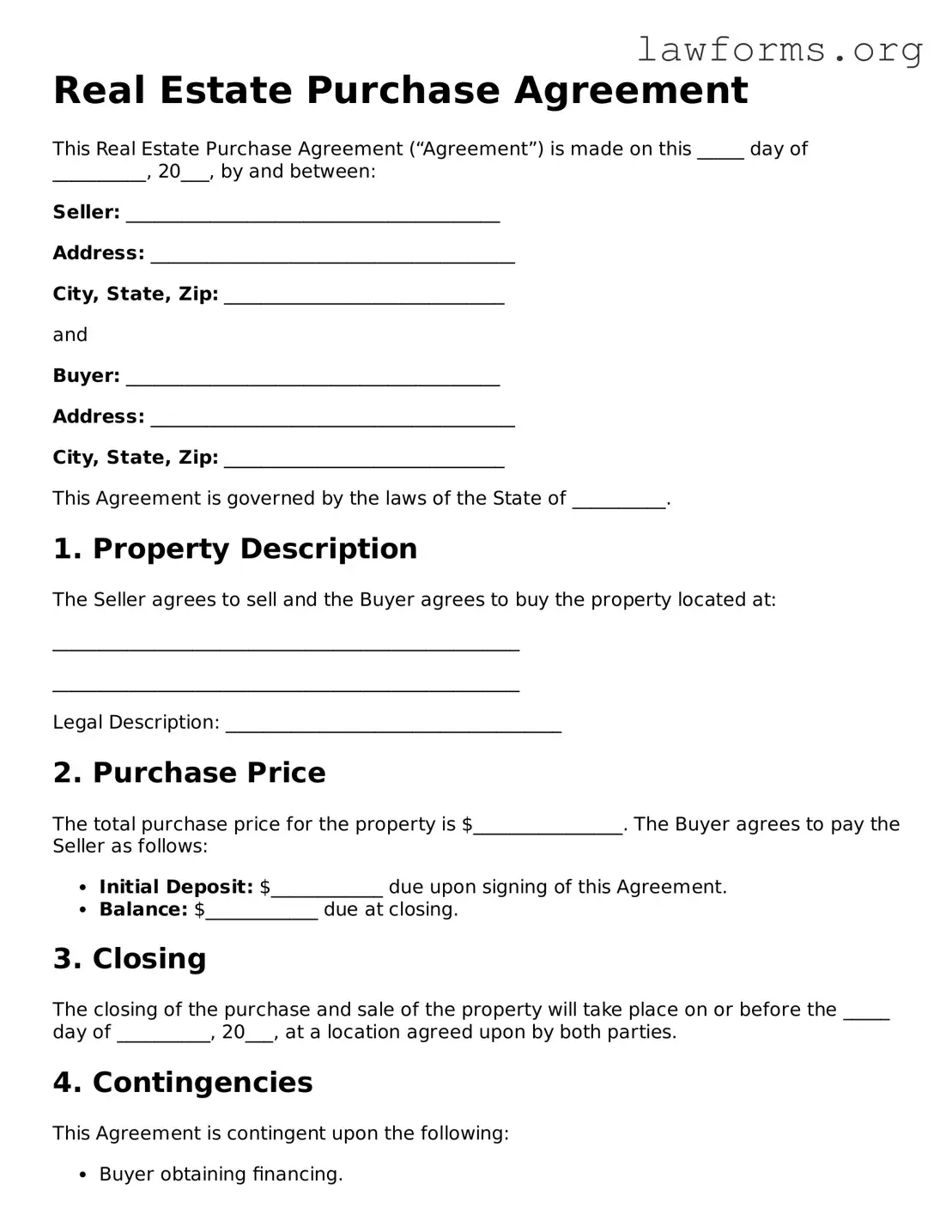Real Estate Purchase Agreement
This Real Estate Purchase Agreement (“Agreement”) is made on this _____ day of __________, 20___, by and between:
Seller: ________________________________________
Address: _______________________________________
City, State, Zip: ______________________________
and
Buyer: ________________________________________
Address: _______________________________________
City, State, Zip: ______________________________
This Agreement is governed by the laws of the State of __________.
1. Property Description
The Seller agrees to sell and the Buyer agrees to buy the property located at:
__________________________________________________
__________________________________________________
Legal Description: ____________________________________
2. Purchase Price
The total purchase price for the property is $________________. The Buyer agrees to pay the Seller as follows:
- Initial Deposit: $____________ due upon signing of this Agreement.
- Balance: $____________ due at closing.
3. Closing
The closing of the purchase and sale of the property will take place on or before the _____ day of __________, 20___, at a location agreed upon by both parties.
4. Contingencies
This Agreement is contingent upon the following:
- Buyer obtaining financing.
- Property appraisal satisfactory to the Buyer.
- Inspection of the property.
5. Additional Terms
Any additional terms or conditions can be added here:
__________________________________________________
6. Signatures
The parties hereby agree to the terms outlined in this Agreement.
_____________________________ Seller's Signature
_____________________________ Date
_____________________________ Buyer's Signature
_____________________________ Date
